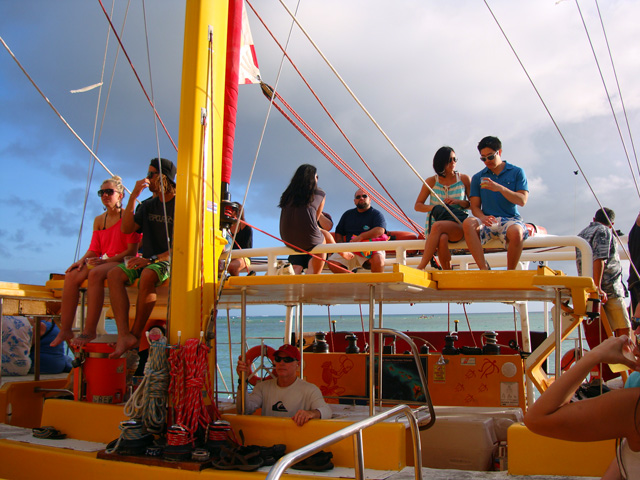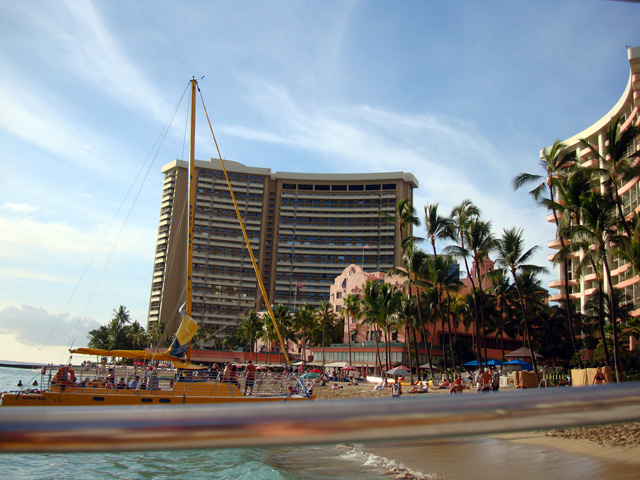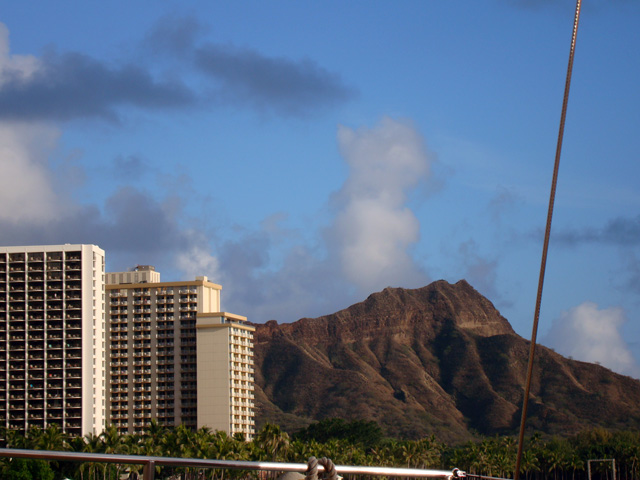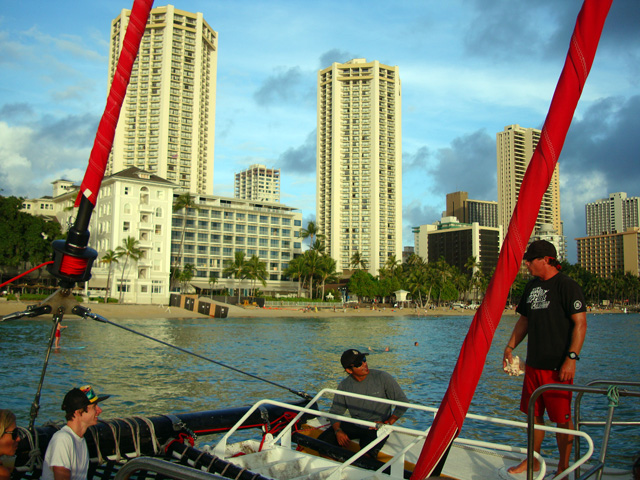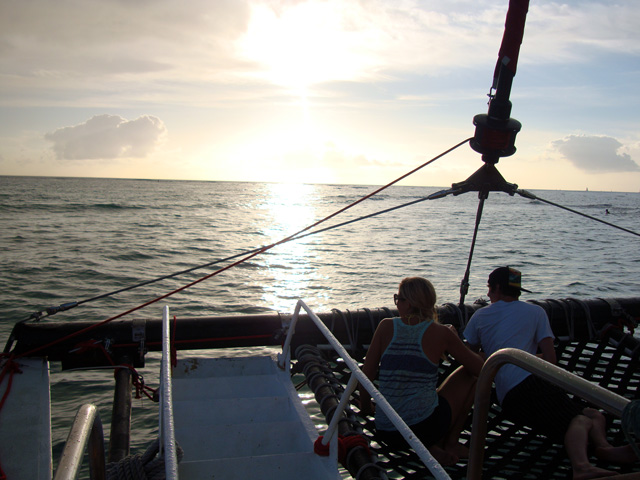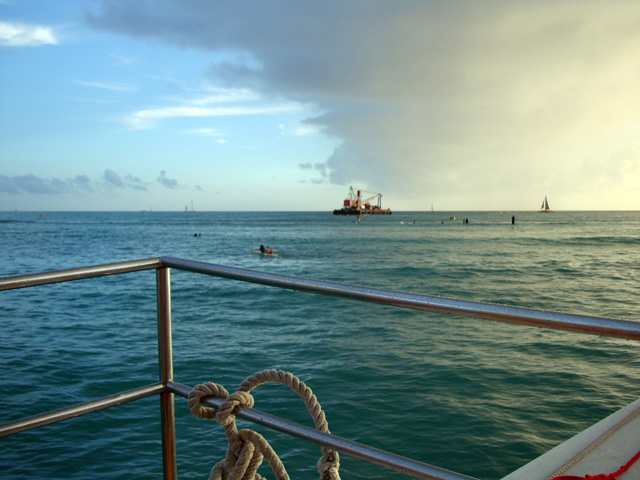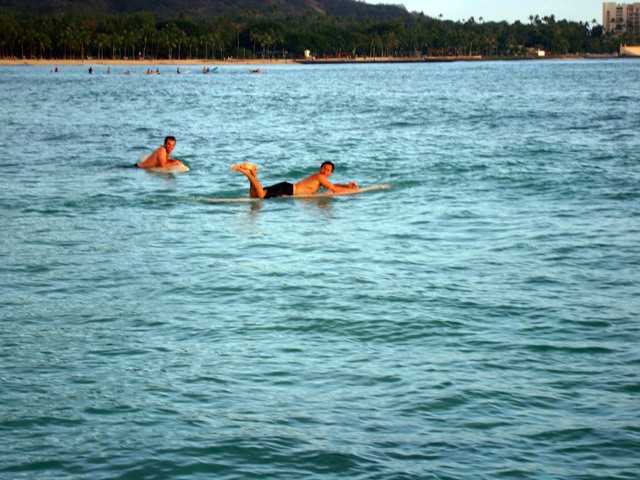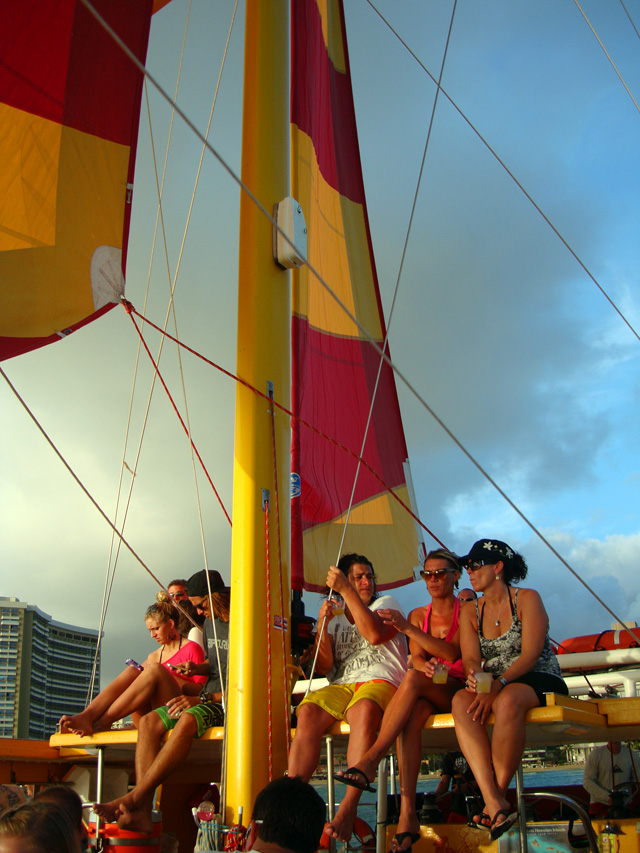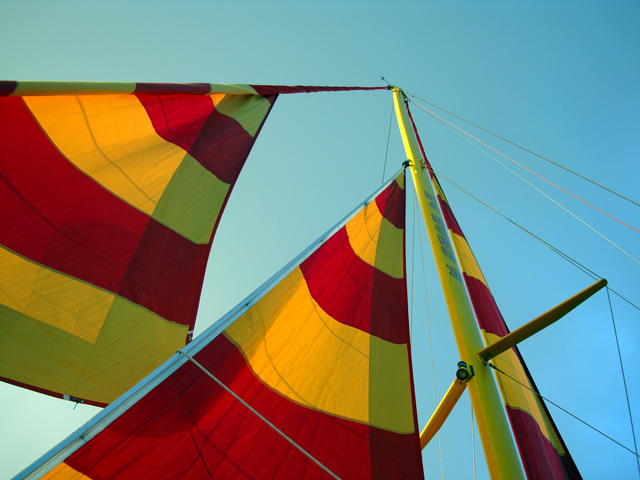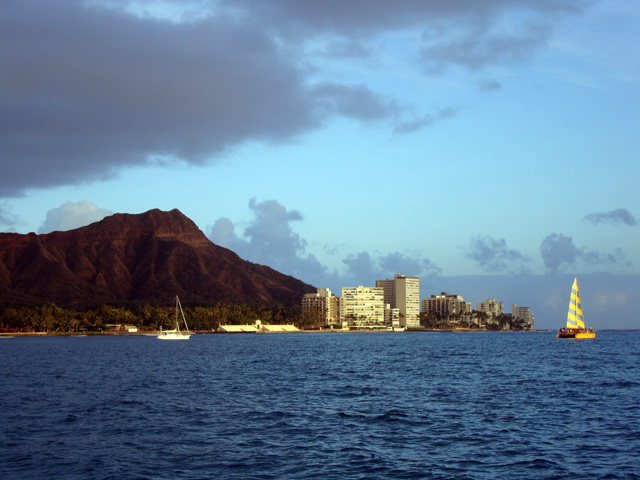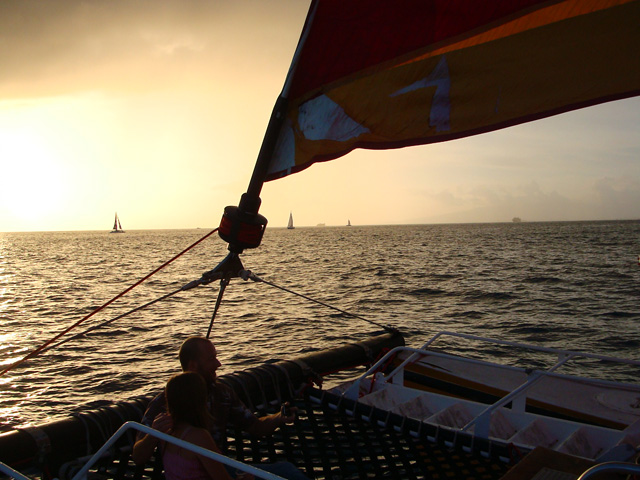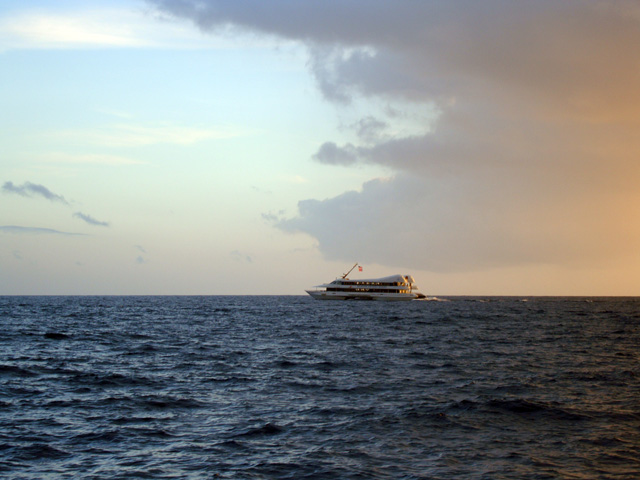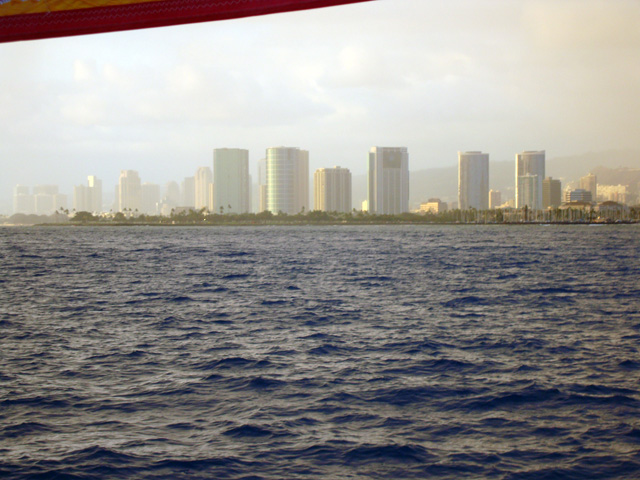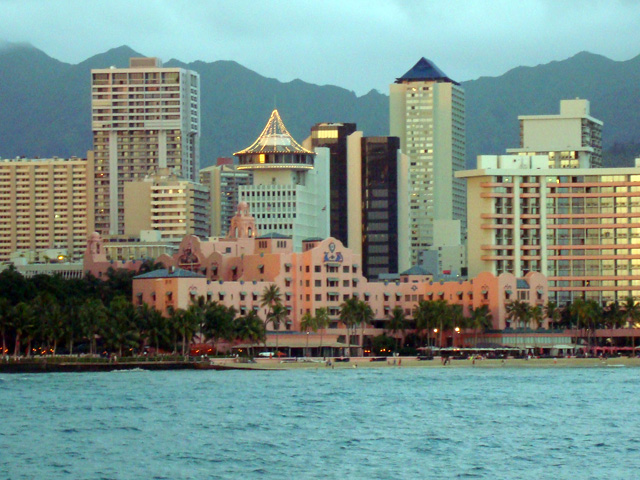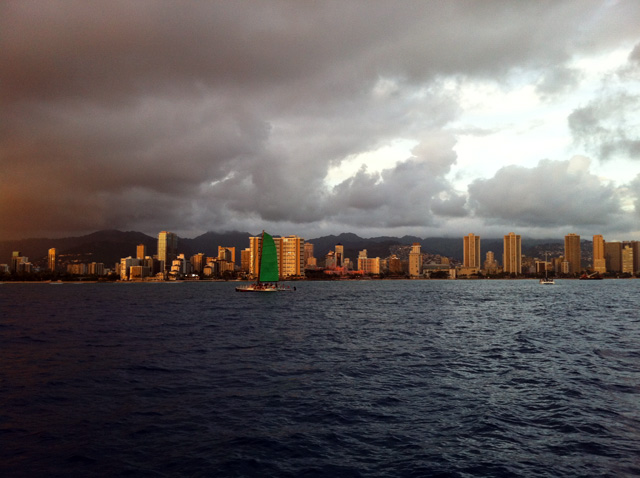Doug kept insisting we go on a sailboat ride at sunset from Waikiki Beach.
Bill wasn't so sure, but it turned out once again that Doug was right.
Is everybody ready to party?
Bill is. I guess.
We left right from the beach.
Bye, beach.
It's Diamond Head!
So now we cruise 'til the sun goes down.
But we won't get too far from our hotels.
Especially not the Pink Lady.
She once was the biggest thing on the beach, but now....
Sailing into the setting sun.
We have to be careful not to run over any surfers.
Cuz they're everywhere, they're everywhere!
And they don't seem to care that we're plowing right through them.
OK, somebody noticed we're here.
But mostly they're oblivious.
Are we going to get a little rain? Maybe.
But mostly the partiers don't care.
They're just sitting and schmoozing and looking at their cell phones.
Now that's an artsy shot. Nice going, Bill.
OK, that's enough artsy.
Yep, dark clouds are approaching.
The weather started getting rough, the tiny ship was tossed.
"Bad weather" on this trip translates to a few drops here and there.
See that stadium on the beach? That's the Waikiki Natatorium War Memorial. It's built in the form of an ocean water public swimming pool and serves as living memorial dedicated to "the men and women who served during the great war” (WWI). Located at the shore west of Kapiʻolani Park and completed in 1927, the natatorium was built in the Hawaiian Beaux-Arts architectural style. The entrance to the memorial includes an arch featuring four stone eagles typical of this style. Inside the memorial is a 100 meter by 40 meter salt water swimming pool. In the opening ceremonies on August 24, 1927, local Olympic gold medal holder Duke Kahanamoku made the first swim (it was his birthday). In the following swim meet, world record holder Johnny Weissmuller won the 100, 400 and 800 meter events, and Buster Crabbe (also local) won the 1500 meters. After the attack on Pearl Harbor in 1941, the natatorium was taken over by the US Army and used for training during World War II. In 1949 it was refurbished and turned over to the City and County of Honolulu on July 1, 1949. Its condition deteriorated, and was officially closed in 1963, but continued to be used. It was added to the National Register of Historic Places listings in Oahu on August 11, 1980. There have been several proposals to demolish the structure, while others argue for its preservation and repair. For generations, the natatorium was a popular recreational gathering center for local residents and tourists. So now you know.
We're not the only sailboat taking in the sunset.
I hope that one doesn't run over us.
Ginger or Mary Ann?
The color of the water is, well, aquamarine, and it is beautiful. Say, maybe this is why they call it "Blue Hawaii?" You think?
Storm clouds at sunset. Nice.
I think it has started to rain in Waikiki.
But we're still doing fine out here.
Kinda dramatic, actually. Bill is so glad he didn't miss this.
The lights on the beach are coming on.
As the sun pulls away from the shore...
And our boat sinks slowly in the west....
Almost gone.
The lights appear at dusk.
Time to head back to shore.
Very nice, Pink Lady. |







